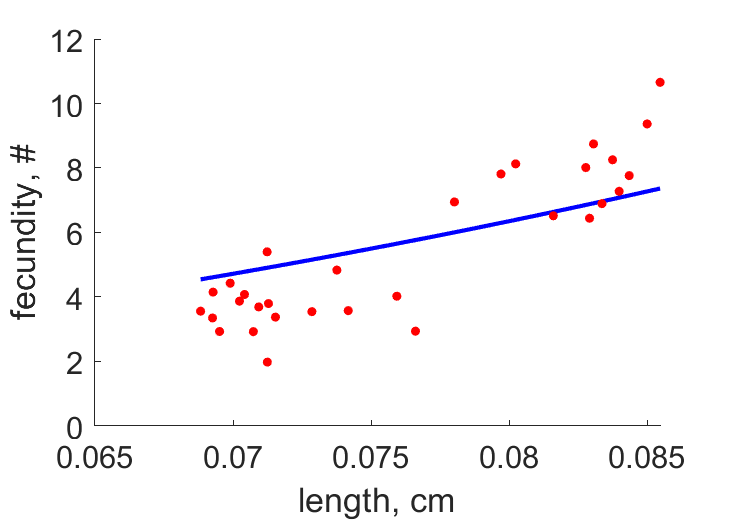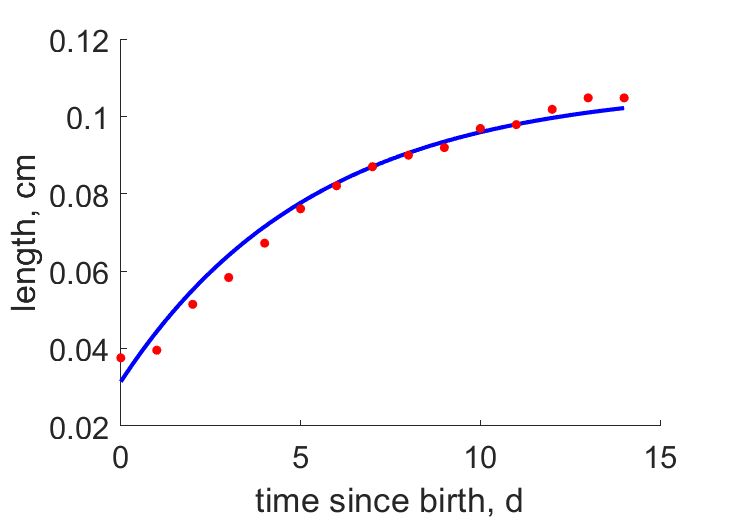Predictions & Data for this entry
| Model: std | climate: C, D | migrate: | phylum: |
| COMPLETE = 2.3 | ecozone: TH, TP, TN | food: biPp, biD | class: |
| MRE = 0.094 | habitat: 0iFp, 0iFl, 0iFm | gender: D | order: |
| SMSE = 0.025 | embryo: Fbf | reprod: Apf | family: |
Zero-variate data
| Data | Observed | Predicted | (RE) | Unit | Description | Reference |
|---|---|---|---|---|---|---|
| ab | 0.6667 | 0.5758 | (0.1363) | d | age at birth | GansLeit2013 |
| tp | 2 | 1.882 | (0.05912) | d | time since birth at puberty | GansLeit2013 |
| am | 40 | 39.99 | (0.0001262) | d | life span | guess |
| Lb | 0.038 | 0.03167 | (0.1666) | cm | total length at birth | GansLeit2013 |
| Lp | 0.069 | 0.06883 | (0.002534) | cm | total length at puberty | Burg1967 |
| Li | 0.17 | 0.1768 | (0.04011) | cm | ultimate total length | nina |
| Lim | 0.08 | 0.08003 | (0.000327) | cm | ultimate total length of males | nina |
| Wdi | 3.47e-05 | 3.446e-05 | (0.006998) | g | ultimate dry weight | guess |
Uni- and bivariate data
| Data | Figure | Independent variable | Dependent variable | (RE) | Reference |
|---|---|---|---|---|---|
| LN |  | length | fecundity | (0.2308) | Burg1967 |
| tL |  | time since birth | length | (0.03269) | GansLeit2013 |
Pseudo-data at Tref = 20°C
| Data | Generalised animal | Ceriodaphnia reticulata | Unit | Description |
|---|---|---|---|---|
| v | 0.02 | 0.02413 | cm/d | energy conductance |
| p_M | 18 | 1680 | J/d.cm^3 | vol-spec som maint |
| k_J | 0.002 | 0.002 | 1/d | maturity maint rate coefficient |
| k | 0.3 | 0.005286 | - | maintenance ratio |
| kap | 0.8 | 0.4251 | - | allocation fraction to soma |
| kap_G | 0.8 | 0.8012 | - | growth efficiency |
| kap_R | 0.95 | 0.95 | - | reproduction efficiency |
Discussion
- males are assumed to differ from females by {p_Am} only
Bibliography